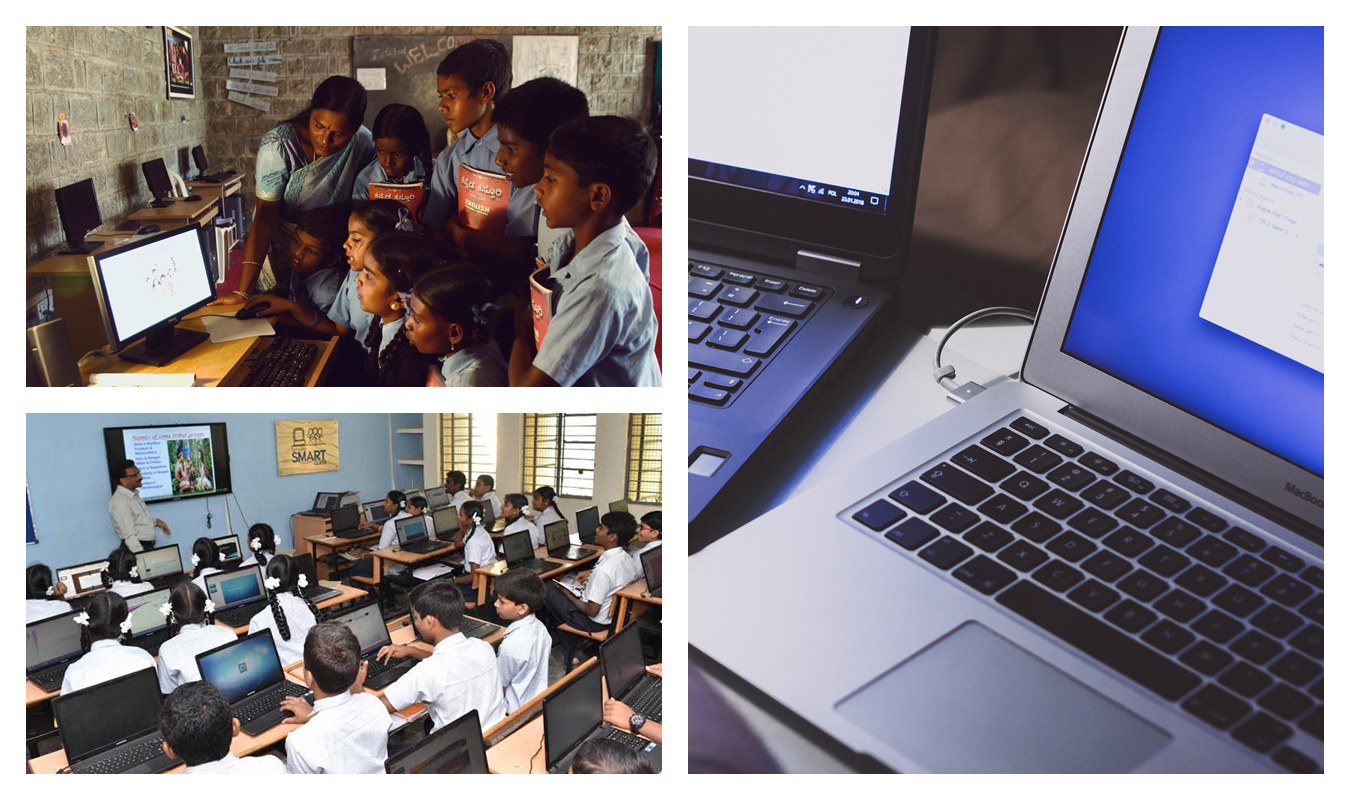Rahul Dogra
The term Digital Divide is used to describe the divergence between people who have access to and the resources to use new information and communication tools (ICT), such as the Internet, and people who do not have the resources and access to the technology. The term also describes the divide between those who have the skills, knowledge and abilities to use the technologies and those who do not. The digital divide can exist between those living in rural areas and those living in urban areas, between the educated and uneducated, between economic classes, and on a global scale between more and less industrially developed nations.
The term “digital divide” was introduced by Larry Irving, Jr., former US Assistant Secretary of Commerce for Telecommunication and Communication in the mid-1990s in order to focus public attention on the existing gap in access to information services between those who can afford to purchase the computer hardware and software necessary to participate in the global information network, and low income families and communities who cannot
In the textbook Introduction to Digital Literacy, author Mark Bowles states “It is vital to make sure that the world is not divided into a two-class society of “information-haves” and “information-have-nots.” In one important way, the effort to help people become digitally literate will ensure that this will not happen”.
Broadly speaking, the difference is not necessarily determined by the access to the Internet, but by access to ICT (Information and Communications Technologies) and to Media that the different segments of society can use. ICTs include any communication device (such as a computer hooked up to the Internet, radio, satellite systems, cellular phones, etc.) used to communicate with and access information. With regards to the Internet, the access is only one aspect, other factors such as the quality of connection and related services should be considered. Today the most discussed issue is the availability of the access at an affordable cost and quality.
According to Statista (An online portal for statistics), Over 4.33 billion people were active internet users as of July 2019, encompassing 56 percent of the global population. China, India and the United States rank ahead all other countries in terms of internet users. As the Digital Divide gets bigger, the consequences of the separation becomes more devastating, impacting larger percentages of the world’s population.
Bridging the Gap :
The life of a typical citizen residing in the rural parts of India consists of farming and doing handicraft jobs. The people there often do not have any access to any form of technology. While most people in the world have Internet access privileges, some do not even have computers and hence, developments stagnate. Though India is the country which has the second highest number of Facebook users in the world, Internet penetration across the entire population is still below 10 percent according to the Internet and Mobile Association of India (IAMAI). In fact, about 70 percent of Indians live in rural areas, where 65 percent among the working population are farmers. As a result, there have been attempts to resolve the technological issue in rural India and bridging the digital divide.
The big question before us now is, “What can we do to bridge the gap called the digital divide?” Solutions to this problem are many. Education is a key factor in providing a solution to the digital divide. Community Technology centers like the Common Service Centers (CSC) schemes are cropping up all across the country in and attempt to increase availability of digital services in persistently poor populations. Colleges and universities provide technology training to those enrolled in their programs. Technology training in rural areas education also needs to be considered like offering training at a reduced cost and classes at night so that those who work during the day can attend. Secondary schools are also making an effort by adding computer labs to the schools.
On July 1, 2015, India embarked on a master-plan named Digital India to transform itself to “digitally empowered society and knowledge economy,” with three things in focus. These were – digital infrastructure, digital governance and services and digital empowerment of citizens. Various policy and investment measures have been undertaken with notable accomplishments.
The Digital India program of Indian Government aims to transform India into a knowledge-based economy and digitally empowered society by ensuring digital access, digital inclusion, digital empowerment and bridging the digital divide. Under Digital India program MeitY has effectively utilised Digital technologies with some initiatives like Digi-Locker. E-Aadhaar, BHIM-UPI, Jeevan Pramaan, Digitize India, MyGov.in etc to transform the lives of people while ensuring digital inclusion of all the segments. The Government is committed to provide governance and services to our citizens in an affordable and efficient manner within the shortest span of time.
It’s not just the government who has to bridge the divide, the common people and private organizations / Start-ups who have excelled in their respective fields have a responsibility too. It is our duty to enable everyone to get the most from the Internet to prevent social exclusion and create a more vibrant and unified society. And if we are to benefit economically and take a lead in the race to be one of the world’s leaders in IT, we must ensure that all sections of society are included. Whatever part we play, this is a collective responsibility and an investment that will ultimately reap rewards for us all. We need to look around and help in creating awareness about the digital literacy there by bridging the gap of digital divide.
feedbackexcelsior@gmail.com


